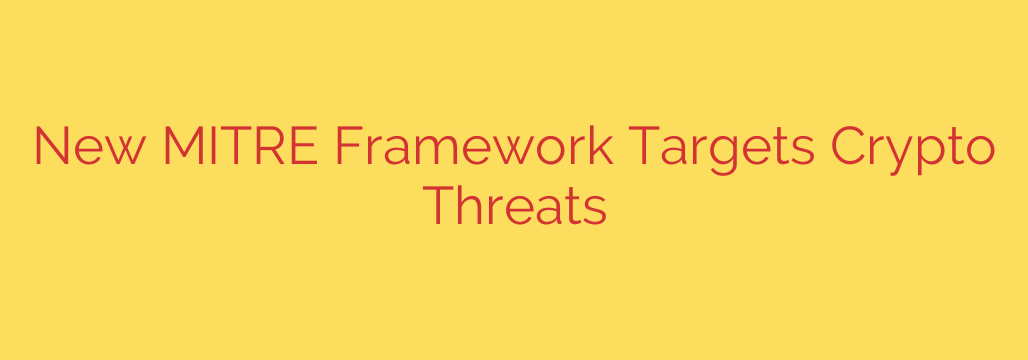
Navigating the Digital Wild West: Understanding the New Framework for Cryptocurrency Threats
The world of digital assets and cryptocurrency continues its rapid evolution, attracting innovation, investment, and unfortunately, sophisticated threats. As the ecosystem expands, so too do the methods employed by malicious actors seeking to exploit vulnerabilities. To effectively combat these emerging risks, security professionals and stakeholders need a common language and a structured approach to understanding the landscape of crypto-related cyber threats. This is where groundbreaking work becomes crucial.
A new framework has been developed specifically to address the unique challenges presented by threats targeting the cryptocurrency domain.
What is the New Cryptocurrency Threat Framework?
Leveraging extensive expertise in cybersecurity knowledge bases, this initiative introduces a framework designed to systematically categorize and describe the Tactics, Techniques, and Procedures (TTPs) observed in attacks against cryptocurrency systems. This effort provides a comprehensive, structured view of how attackers operate within this specific environment, moving beyond general cyber threat models to focus on the unique aspects of blockchain technology, smart contracts, exchanges, wallets, and associated infrastructure.
Why a Dedicated Framework for Crypto Threats?
Why is such a specific framework necessary? The cryptocurrency space presents distinct attack surfaces and exploitation methods not typically covered in traditional cybersecurity models. Attacks often target specific blockchain protocols, smart contract logic, custodial services, and the human element surrounding digital asset management. This framework helps security teams, researchers, and defenders:
- Identify common attack patterns.
- Understand the lifecycle of a crypto-specific cyber intrusion.
- Develop targeted defenses and mitigation strategies.
- Improve communication and collaboration within the security community.
Diving Deeper: What TTPs Does it Cover?
The framework delves into various stages of a typical attack chain, adapted for the crypto context. It categorizes techniques ranging from initial access methods (like phishing for wallet keys or exploiting software vulnerabilities) to execution (deploying malicious smart contracts or exploiting protocol flaws), persistence, privilege escalation, defense evasion, credential access, discovery, lateral movement, collection, command and control, and ultimately, impact (such as asset theft or service disruption). By detailing these TTPs, it provides a granular view of attacker behavior across the entire attack lifecycle.
Actionable Security: How to Use This Knowledge
For individuals and organizations involved with cryptocurrency, the existence of this framework serves as a crucial reminder. Understanding the documented TTPs is the first step towards robust defense. Actionable security measures informed by this type of threat intelligence include:
- Implementing strong multi-factor authentication (MFA) for all crypto-related accounts and services.
- Being vigilant against phishing attempts specifically targeting wallets, exchanges, or private keys.
- Regularly auditing smart contracts for vulnerabilities if you are a developer or project.
- Securing private keys using hardware wallets or reputable cold storage solutions.
- Staying informed about common exploits and vulnerabilities within the ecosystem.
- For organizations, integrating this threat intelligence into security operations and incident response plans.
Conclusion
In a rapidly evolving landscape like cryptocurrency, staying ahead of threats requires continuous learning and collaboration. This new framework represents a significant step forward in providing the community with the structured knowledge needed to understand and counter the sophisticated attacks targeting digital assets. By adopting a proactive approach informed by detailed threat intelligence, stakeholders can better protect themselves and the broader ecosystem, fostering a more secure future for decentralized finance and digital assets.
Source: https://www.helpnetsecurity.com/2025/07/14/mitre-aadapt-adversarial-actions-in-digital-asset-payment-technologies/








